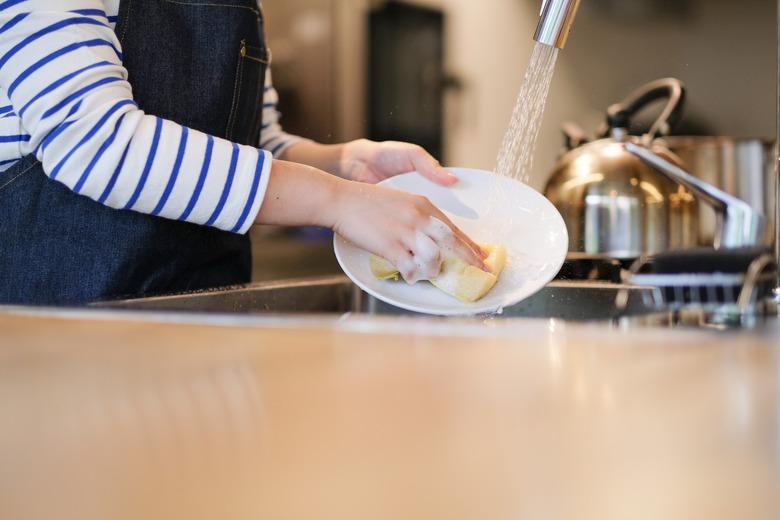How To Sanitize Old Dirty Dishes
It doesn't take long for a pile of dirty dishes to turn into a stinky, moldy mess. When you finally get around to washing the dishes, what's your strategy for truly sanitizing them? If you think removing the visible grime means you can safely eat off the dishes, think again.
You can't be too careful when it comes to food safety, because whatever lurks on your dishes will end up in your body. Bacteria from raw meat or eggs, mold and even food allergens can linger and cause anything from mild digestive distress to full-blown food poisoning. That's why knowing the best cleaning and sanitizing procedures for dishes can keep you and your family safe.
Difference Between Cleaning and Sanitizing Procedures
Difference Between Cleaning and Sanitizing Procedures
Cleaning and sanitizing represent two different processes with two different goals. Understanding the difference can help you effectively sanitize dishes.
Cleaning refers to the process of removing particles from the dishes, such as food scraps, lipstick, mold or general dirt and grime. The best way to clean dishes involves grease-busting soap and hot water. For hand washing, 100 degrees Fahrenheit is recommended, if you can tolerate it. But special protective dish washing gloves exist if you cannot.
Once the dishes look and feel clean, you have easy access to the invisible pathogens like bacteria and allergens. This is a crucial point to remember: if you try to sanitize dishes without cleaning them, you're essentially sanitizing the food scraps, not the dishes underneath. As for the best way to sanitize dishes, two strategies exist: getting them really hot or exposing them to a chemical sanitizing solution.
Sanitizing Dishes With Hot Water
Sanitizing Dishes With Hot Water
You have a couple of options when it comes to sanitizing dishes with hot water. The most convenient method is to put the dishes into a dishwasher and use the "sanitize" option. This will expose the dishes to bacteria-killing heat. But if you don't have a dishwasher or the one you own doesn't have a sanitize option, you can accomplish the same procedure in your kitchen sink or on your stove.
You'll want to have a floating thermometer, a timer and heat-resistant dish washing gloves or rubber-tipped tongs for extracting the dishes. The recommended minimum temperature for sanitizing dishes is 170 degrees Fahrenheit. This is 40 degrees below the boiling point of water, so the easiest way to get water this hot is not through your tap, but by heating water on the stove.
If you have a large soup pot and small dishes, you can sanitize directly in the pot on your stove. Otherwise, carefully pour the water into a clean sink with a plugged drain so that you have enough room to maneuver. Use the thermometer to confirm that the temperature is at least 170 degrees Fahrenheit, and use the timer to ensure each dish stays in the water for a full 30 seconds.
Sanitizing Dishes With a Chemical Solution
Sanitizing Dishes With a Chemical Solution
If you don't want to mess around with near-boiling water, you can soak dishes in a chemical solution, instead. Measure out your own diluted solution of 1 tablespoon chlorine bleach per 1 gallon of cool water and soak the dishes for at least one minute. Use gloves or tongs to remove the dishes from the water in order to protect your skin.
Or, you can buy dish sanitizer tablets. Follow the directions for the temperature and amount of water to use per tablet, as well as how long to allow the dishes to soak. For best results, the dishes should air dry after soaking, regardless of whether you used a chlorine bleach solution or dish sanitizer tablets.
